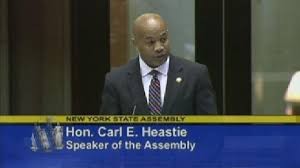 By Anthony Rivieccio, Founder of The Northwest Bronx Democrats
By Anthony Rivieccio, Founder of The Northwest Bronx Democrats
This month, Bronx Democratic Party Chairman and Assemblyman Carl E. Heastie ascended to Speaker of the New York State Assembly. Heastie, now ranks among the three most powerful persons in Albany. After all this time, the BDCC Chairman has achieved political relevance and greatness, again! But Speaker Heastie has announced his intention to step down as the Bronx Democratic county leader in order to focus on his new position.
So what does a County Leader do besides represent the interests of the local Democratic party and its politics? Well, the county leader is very influential. The party leader and his leadership team endorses candidates for public office from state assembly and city council to statewide and national candidates to judges. Critics say that party county leaders have an out-sized influence on the local legal system.
So, how powerful is the Chairman of The Bronx Democratic Party (BDCC)?
King Flynn! The luck of the Irish! Oh the good olde days!
Well, let’s look at November 1938 when Bronx Democratic boss Edward Flynn becomes Democratic National Committee chairman. Flynn, a close supporter of FDR and the New Deal, introduced FDR to Jim Farley. It was Farley who managed FDR’s success 1932 and 1936 presidential campaigns. During both of these campaigns, Flynn worked alongside Farley and FDR. Flynn appreciated Eleanor Roosevelt’s political organizational skills and the two developed a close, effective working relationship.
In 1933, FDR appointed Flynn as a regional administrator of the National Recovery Administration’s public works program, thus placing Flynn in FDR’s inner circle of political advisers.
When Jim Farley refused to support FDR in a third presidential bid, Flynn stepped in. And in 1940 FDR appointed Flynn national chairman of the Democratic party. Working closely with FDR, Flynn would serve in this capacity from 1940-1943. Through his campaign leadership, Flynn led FDR to his third and fourth presidential victories in 1940 and 1944. In 1943, FDR tried to appoint Flynn ambassador to Australia but the Senate refused confirmation due to Flynn’s ties to Tammany Hall and the perceived corruption found there. After the failed confirmation, Flynn returned to the chairmanship of the Democratic National Committee.
King Flynn brought John F. Kennedy to the Bronx and helped to propel JFK into presidential office in 1960. Flynn shows how powerful that post could be.
The rise of a Black and Brown Bronx
Then, as Puerto Ricans and Blacks moved in greater numbers into Bronx neighborhoods, there was no doubt, with an ethnically changing–burning–boogie down Bronx in the 1970’s, that new leaders would emerge. Herman Badillo, Edward Stevenson, Ramon S. Velez and Rev. Wendell Foster were among the first to emerge. State Sen. Israel Ruiz, Assemblyman Jose Rivera, Councilman Fernando Ferrer and many many others followed.
The “Parking Violations Bureau” and “Wedtech” corruption scandals of late 1980s precipated political changes. Little-known Councilman Fernando Ferrer replaced the disgraced Stanley Simon as Bronx Borough President. After his conviction on federal corruption charges, Democratic party boss Stanley Friedman (a former deputy mayor under Mayor Abraham Beame) was ousted and Northwest Bronx Assemblyman George Friedman took the helm of a county organization reeling from corruption scandals. Finally, in 1994, the brief era of George Friedman’s leadership ended when he stepped aside and handed the broken reins to a new Bronx Democratic boss, Assemblyman Roberto Ramirez.
When President Bill Clinton, traveled down the same Charlotte Street road as did former President Jimmy Carter & (presidential candidate) Ronald Reagan in 1977 and 1980, respectively, Mr Clinton declared that “The Bronx is Back” and symbolized it as an “All American City”, in 1997.
But when National Democrats came to the Bronx prior to the 70’s, The Bronx Democratic reins were powerful- just an ear away from the telephone of The President. When President Clinton left Poe Park in 1997, I contend that the Bronx Democratic Party was at the beginning of latest nadir.
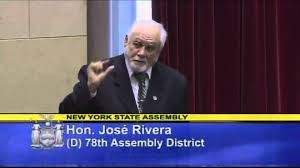 In 2002, Assemblyman Jose Rivera followed in the wake of former Chair Ramirez’s sudden departure from party and electoral politics. Many new leaders emerged, claiming they wanted to save the Bronx Democratic Party from Rivera’s cronyism. Disgruntled elected officials coalesced into what former Daily News Bronx bureau chief, Bob Kappstatter dubbed, “Rainbow Rebels” group, dissenting from Chairman Rivera.
In 2002, Assemblyman Jose Rivera followed in the wake of former Chair Ramirez’s sudden departure from party and electoral politics. Many new leaders emerged, claiming they wanted to save the Bronx Democratic Party from Rivera’s cronyism. Disgruntled elected officials coalesced into what former Daily News Bronx bureau chief, Bob Kappstatter dubbed, “Rainbow Rebels” group, dissenting from Chairman Rivera.
In September 2008, The Rainbow Rebels, led by Assemblymen Carl Heastie, Ruben Diaz Jr, and Jeffrey Dinowitz, deposed Chairman Rivera and his allies.
“It’s been a long journey and I’m glad that we finally have some resolution,” said Assemblyman Carl E. Heastie, the new chairman of the Democratic Party in the Bronx, after a favorable State Supreme Court ruled dismissed Rivera’s lawsuit challenging his ouster as party leader.
“Now it’s time to get back to what needs to be done in the Bronx,” said Heastie, at the time. “This is a time to bring Democrats in the Bronx together again.”
Fast-forward to September 2014 when Assemblyman Carl Heastie was unanimously re-elected as Chairman of the Executive Committee and as Democratic County Leader. Six years later, Chairman Heastie has earned the unanimous support of Bronx elected officials, district leaders, members of the County Committee and the grassroots Democrats of the Bronx. What happens now that Heastie has announced plans to resign as county leader?
So, who will take the reins as the newest BDCC Chairman?
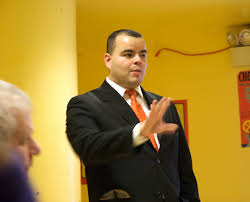 Marcos A. Crespo was born July 29, 1980 and is a Democratic member of the New York State Assembly representing the 85th Assembly District, which includes the Soundview, Clason Point, Longwood, and Hunts Point sections of the South Bronx as well as Rikers Island.
Marcos A. Crespo was born July 29, 1980 and is a Democratic member of the New York State Assembly representing the 85th Assembly District, which includes the Soundview, Clason Point, Longwood, and Hunts Point sections of the South Bronx as well as Rikers Island.
Born in Guayama, Puerto Rico, Crespo and his family moved to New York City when he was a young child. Crespo also spent some time in Lima, Peru, in his young years, thus shaping Crespo’s views about the conditions of other countries.
He enrolled in John Jay College in 1996, pursuing a degree in government studies. In 2003, he participated in the State Assembly’s internship program, where he was assigned to work with Assemblyman Rubén Díaz, Jr. Crespo earned his B.A. degree in 2004, after which he got a position as assistant to New York State Senator Rubén Díaz, Sr
Crespo was first elected to the State Assembly in a June 2009 special election to replace Rubén Díaz Jr., who became Bronx Borough President in 2009.
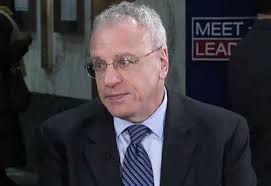 Jeffrey Dinowitz was (born December 3, 1954 and is a Jewish American politician who represents District 81 in the New York State Assembly, which comprises Kingsbridge, Norwood, Riverdale, Van Cortlandt Village, Wakefield, and Woodlawn.
Jeffrey Dinowitz was (born December 3, 1954 and is a Jewish American politician who represents District 81 in the New York State Assembly, which comprises Kingsbridge, Norwood, Riverdale, Van Cortlandt Village, Wakefield, and Woodlawn.
He was chosen in a special election held in 1994 to replace G. Oliver Koppell. Dinowitz previously served as Democratic District Leader from 1986 to 1994. He has also served as a Democratic State Committeeman (1978), and as a delegate to the Democratic National Convention. He has also served as President of the Benjamin Franklin Reform Democratic Club three times in the past and remains an active member of the club to this day.
As an Assemblyman, Dinowitz chairs the Standing Committee on Consumer Affairs and Protection, as well as serving as a member of several other standing committees.
Prior to entering the Assembly, Dinowitz served for a decade as an administrative law judge for New York State.
He is a graduate of the Bronx High School of Science, Lehman College of the City University of New York, and Brooklyn Law School.
He and his wife Sylvia have been married since 1978. They have two children: Kara and Eric, now a district leader in the 81st AD.
There is now rumor of a possible third candidate, a Dominican. Whomever wins support of the party’s executive committee (and Speaker Heastie), would be holding a seat, prominent from the 1930s through the mid-1980’s; some would say a post re-energized during the rein of Roberto Ramirez. Reformers would claim that the county leader seat was reborn with the selection of Assemblyman Heastie.
Bronx Democrats should ask themselves if they want their new county leader to be experienced in Government. Will the BDCC continue its youth movement and elect a younger speaker? Is there enough of a splinter- if any – to allow for a 3rd candidate, like a Luis Supovelda or a Mark Gjonaj?.
Or will there even be a vote? Technically, County Committee Chairman and executive committee vice-chair, Assemblyman Jeffrey Dinowitz is NOW in charge, until an election is called!
Boy! 2015, was supposed to be an electoral “off” year (laugh).
[CORRECTION – An earlier posting incorrectly noted Stanley Friedman was a Deputy Mayor under Ed Koch. Friedman was a Deputy Mayor under Abe Beame. H/T to our reader, Jerry Skurnick.]
Anthony Rivieccio is a five-decade Bronx resident and has 30 years as a Bronx Small Business Owner. He was past president of Bronxites for Parks, The 204th St/Bainbridge Ave Merchants Association & The Committee of 100 Democrats. He is currently a member of The Bedford Mosholu Community Association, Friends of Mosholu Parkland, Friends of Williamsbridge Oval, a former member of Community Board 7 and founder of Northwest Bronx Democrats.

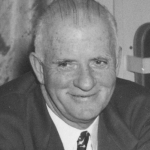

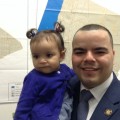
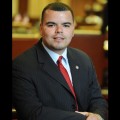
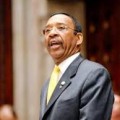












Follow Us